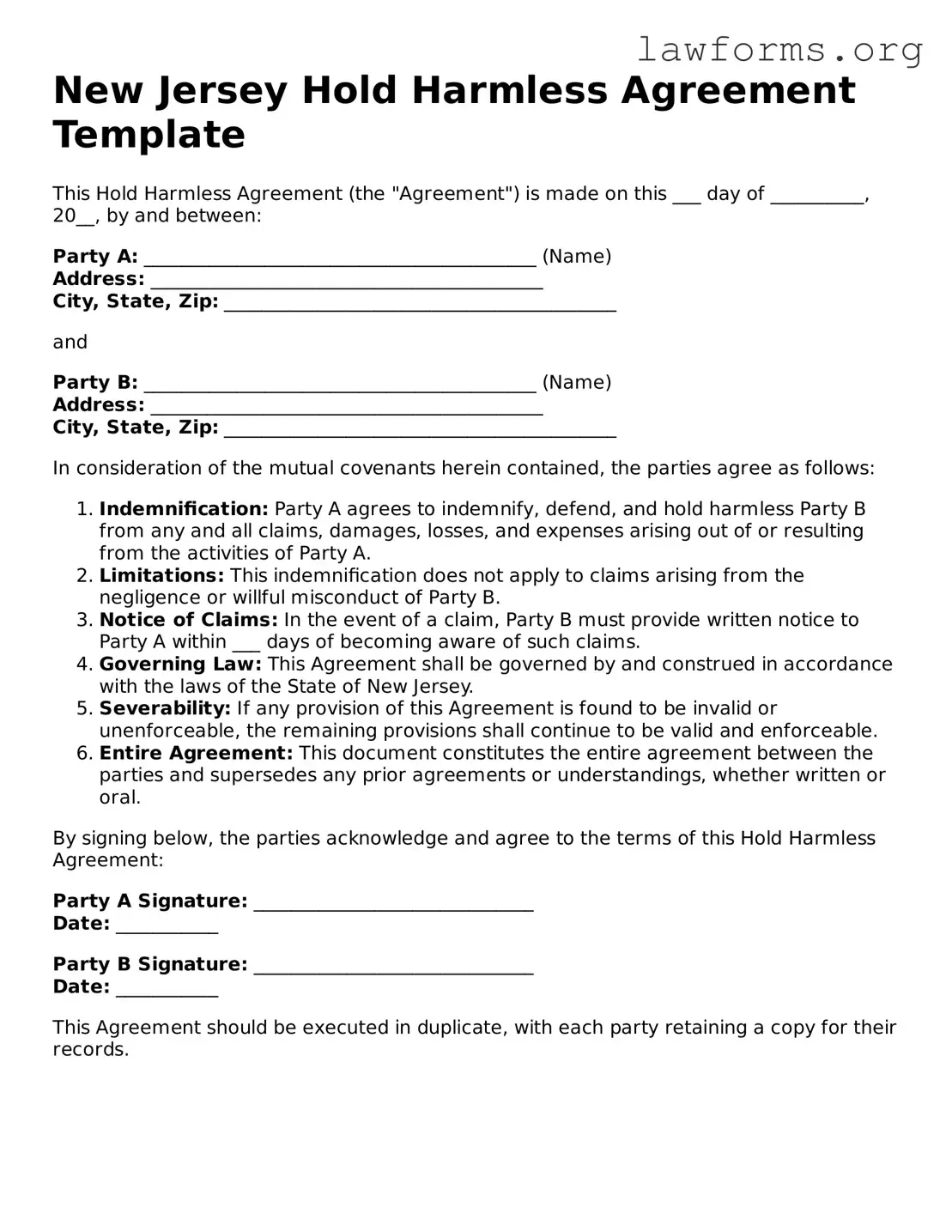New Jersey Hold Harmless Agreement Template
This Hold Harmless Agreement (the "Agreement") is made on this ___ day of __________, 20__, by and between:
Party A: __________________________________________ (Name)
Address: __________________________________________
City, State, Zip: __________________________________________
and
Party B: __________________________________________ (Name)
Address: __________________________________________
City, State, Zip: __________________________________________
In consideration of the mutual covenants herein contained, the parties agree as follows:
- Indemnification: Party A agrees to indemnify, defend, and hold harmless Party B from any and all claims, damages, losses, and expenses arising out of or resulting from the activities of Party A.
- Limitations: This indemnification does not apply to claims arising from the negligence or willful misconduct of Party B.
- Notice of Claims: In the event of a claim, Party B must provide written notice to Party A within ___ days of becoming aware of such claims.
- Governing Law: This Agreement shall be governed by and construed in accordance with the laws of the State of New Jersey.
- Severability: If any provision of this Agreement is found to be invalid or unenforceable, the remaining provisions shall continue to be valid and enforceable.
- Entire Agreement: This document constitutes the entire agreement between the parties and supersedes any prior agreements or understandings, whether written or oral.
By signing below, the parties acknowledge and agree to the terms of this Hold Harmless Agreement:
Party A Signature: ______________________________
Date: ___________
Party B Signature: ______________________________
Date: ___________
This Agreement should be executed in duplicate, with each party retaining a copy for their records.
